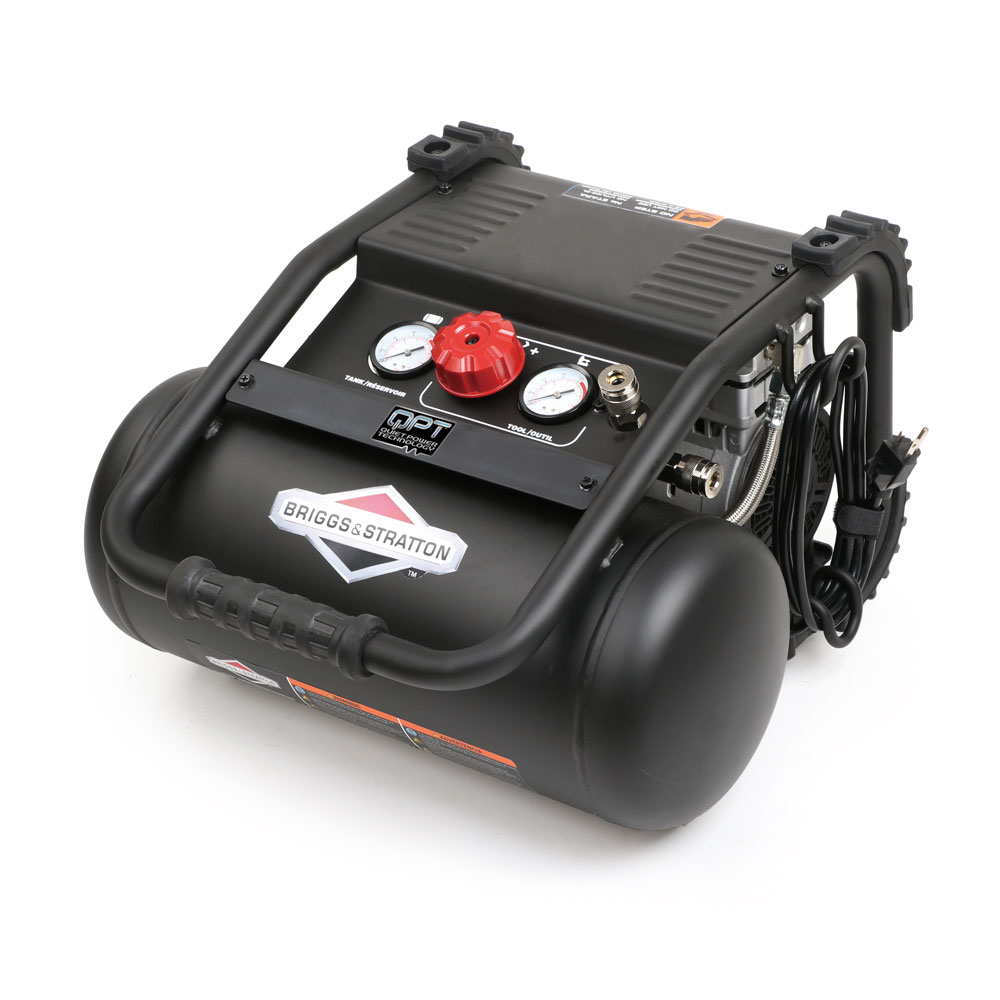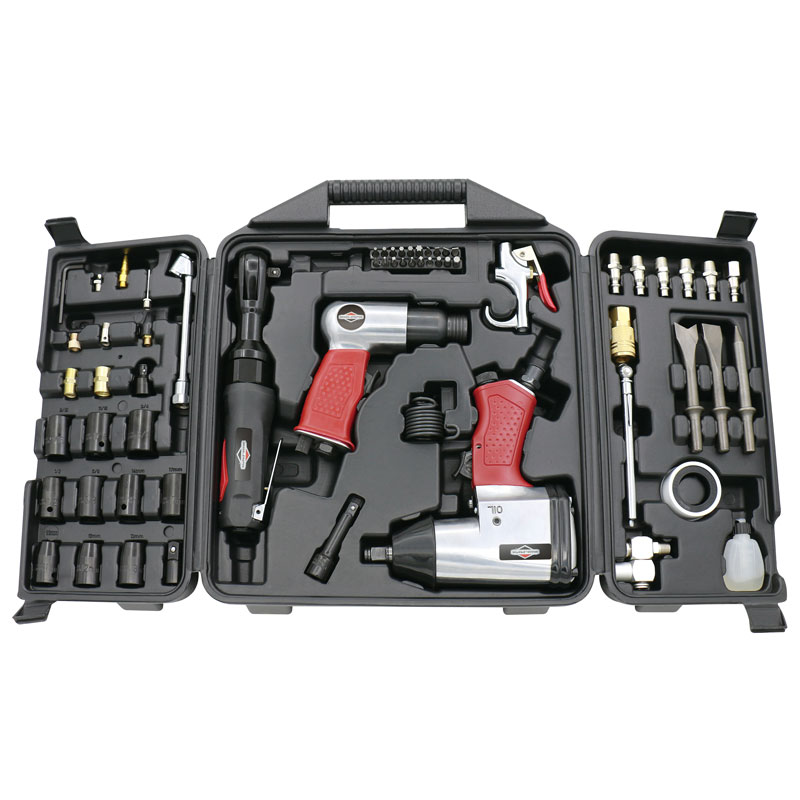Air Compressor FAQs
Quick Links:
If your air compressor is not producing sufficient pressure there are a few common problems you can check for. When checking your air compressor, make sure you have your operator’s manual available so you can reference it for specific maintenance, operating, and troubleshooting instructions. If you do not have a copy of your manual, you can search for yours here by using the model number of your air compressor.
- Check the tank ball valve. Make sure it is closed.
- Check all connections and fittings for leaks. Tighten or reseal connections as necessary. But, be careful to not overtighten fittings. Soapy water can also be applied near the area of suspected leaks. If bubbles appear, the leaking component may require repair or replacement.
- Check the air hose for holes. If the hose is damaged, shows sign of excessive wear or has a hole in it, replace the hose.
- Check the amount of air being used. If there is a prolonged or excessive use of air, adjust the regulator on your air compressor to decrease the amount of air being used.
- Check the air requirement of the accessory that you are using. If it is higher than the CFM and the pressure supplied by the compressor, you need a larger compressor. Most accessories are rated at 25% of the actual CFM while running continuously. For a quick reference, you can also refer to our air tool compatibility chart for more information.
If your air compressor’s motor is not running there are a few common problems you can check for. When checking your air compressor, make sure you have your operator’s manual available so you can reference it for specific maintenance, operating, and troubleshooting instructions.
- Make sure your unit is properly plugged in. Your compressor should be used on a nominal 120 V grounded circuit. The power cord that is equipped with a grounding plug. Verify that the compressor is plugged into an outlet that has the same configuration as the plug. Do not modify the plug to make it fit in the outlet.
- The motor’s thermal overload protector may have tripped. Turn off the air compressor, unplug the power cord and wait until the motor has cooled down. Plug in the power cord only after the motor has cooled down, waiting at least five minutes to make sure the thermal overload protector has recovered.
- The relief valve may be stuck in the open position. Check the relief valve and make sure it is closed.
- The tank pressure may have exceeded the preset pressure switch limit. The motor will start automatically when the tank pressure drops below the tank cut-in pressure.
HOW-TO ARTICLES
Learn how to properly and safely use, troubleshoot and maintain your Briggs & Stratton equipment.
VIDEOS
Learn about the latest products, step-by-step instructions on how to locate your engine model number and more.




